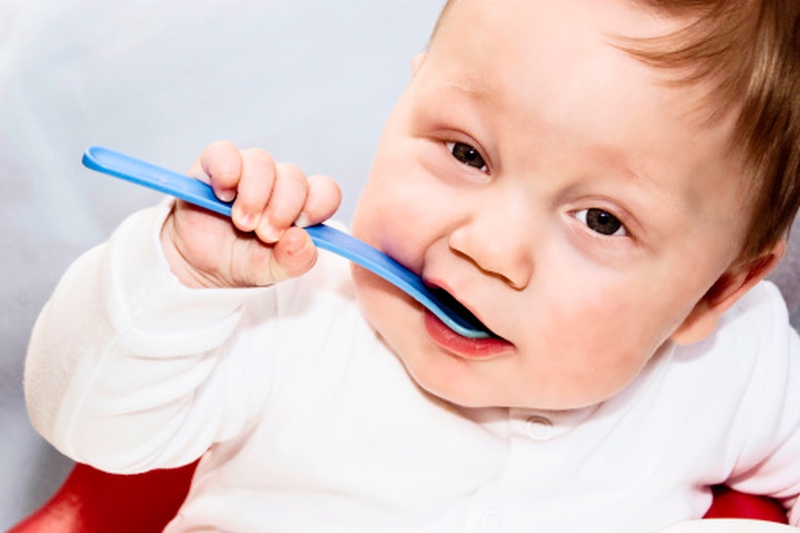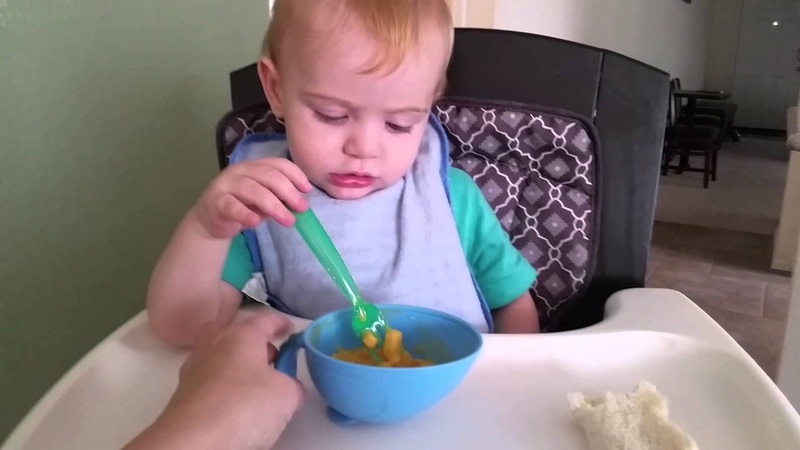One of the major developmental milestones your baby will reach is the day they start to explore how to use their fingers to eat. This seemingly simple task teaches your baby how to master her finger skills, chew and move food around in their mouth, and how to gum. These skills are all vital in the developmental process. If you and your baby are ready to move on from mashed up food to smaller bite-sized pieces of foods, you want to know how you can encourage them to do self-feeding. Try out these tips and tricks to make the process more fun and easier for your baby.

Baby Self-Feeding: Stages and Tips to Achieve It
Finger Feed
When will it start?
Children can typically start feeding themselves using their fingers around 8 months of age. Usually, they begin this process by using their whole hand instead of just the fingers. They will start off using a raking motion with their whole hand until they slowly begin to just utilize the fingers to grab onto more food. Around 9 months of age, most children get better control of the pincer grasp. This grasp is one of the foundations for children to begin fine-tuning their motor skills which they will use for things such as writing.
How to teach your child to achieve it?
Begin giving your child food items that are dry and big enough to grasp but not so big that they may choke. Puffs and cheese curls broken into smaller pieces are ideal for practicing. You want to encourage your child to isolate using their pointer finger and thumb to grab onto the food, but give them to opportunity to learn. If they struggle with the pincer grasp, then give them one piece at a time so they can practice and perfect it.
With a Spoon
When will it start?
Most toddlers will be able to use a spoon to feed themselves independently by the age of 2. However, baby self-feeding with a spoon can also be learned at a much younger age. While it may be messy at first around the age of one, baby can begin to use a spoon to feed themselves at that time.
How to teach your child to achieve it?
Learning to use a spoon is going to take a lot of practice and you need to just let your child try. When you feed your baby or toddler, let them have their own spoon to hold. They will begin to learn the motions by watching you and this will encourage them to put the spoon in their mouth. When your child has understood that the spoon is supposed to go in their mouth, you can begin to guide their hands with yours to dip in the food. You don't have to put a lot of food on the spoon just enough for them to taste and they will begin to get the hang of the movements and their coordination. Once they have these motion under control, begin to give them their own bowl and allow them to try feeding themselves. You may want to get suction bowls that will make it more difficult for your baby to move, or throw while it is meal time. Some babies will need to be reminded that the food is supposed to go into their mouths and not be played with. Don't let the mess trouble you too much. You can expect your little one to be a messy eater up until they are about 2 ½ years of age.
With a fork
When will it start?
Once your child has mastered using a spoon, baby self-feeding with a fork is next. By the age of 2, your little one should be able to use a fork to feed themselves, even though they will still most likely prefer to use their fingers.
How to teach your child to achieve it?
When it comes to teaching your child how to use a fork, you want to start off with easy to poke foods such as cheese or chicken nuggets. Give them their own toddler safe fork and allow them to try to poke the food themselves. If they struggle a lot, you can guide them with your hands to help them gain a better understanding of how to use the fork.
More You May Want to Know
When They Can Drink Water
For the first 6 months, your baby won't need water. The breast milk or formula supplies their bodies with the proper amount of water. Before the 6 month mark, you should avoid giving your baby water as it can fill up their stomachs and leave less room for the vital nutrients and vitamins they need from the breast milk or formula. When you begin to allow your baby to eat more solid foods, they can be given water at meals. Starting around 9 months of age, you should be allowing your baby to drink small amounts of water from a sippy cup. Your baby may begin to show interest in drinking water before 9 months of age. It is OK to allow them a few sips of water, but remember that the water should not replace their formula or breast milk.
When They Can Completely Feed Themselves
Baby self-feeding can be a long process. With plenty of practice, your baby will begin to self-feed themselves with consistent help from you. While it can be rather messy, most children will get the hang of self-feeding around their second birthday, but you would like to know that they will have a good understanding of how to do it once they reach one year.



View All Comments /Add Comment